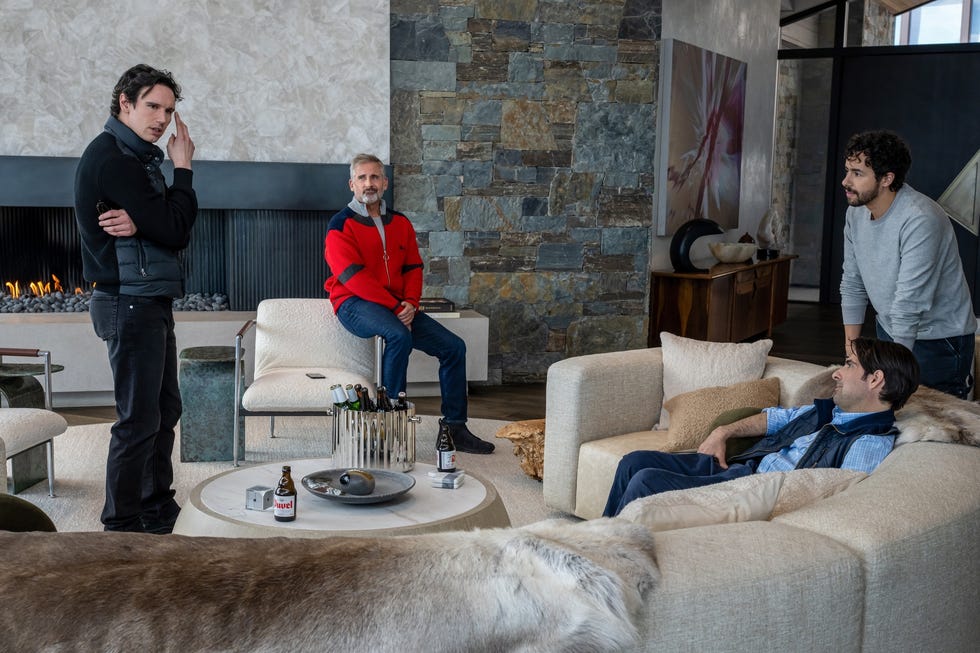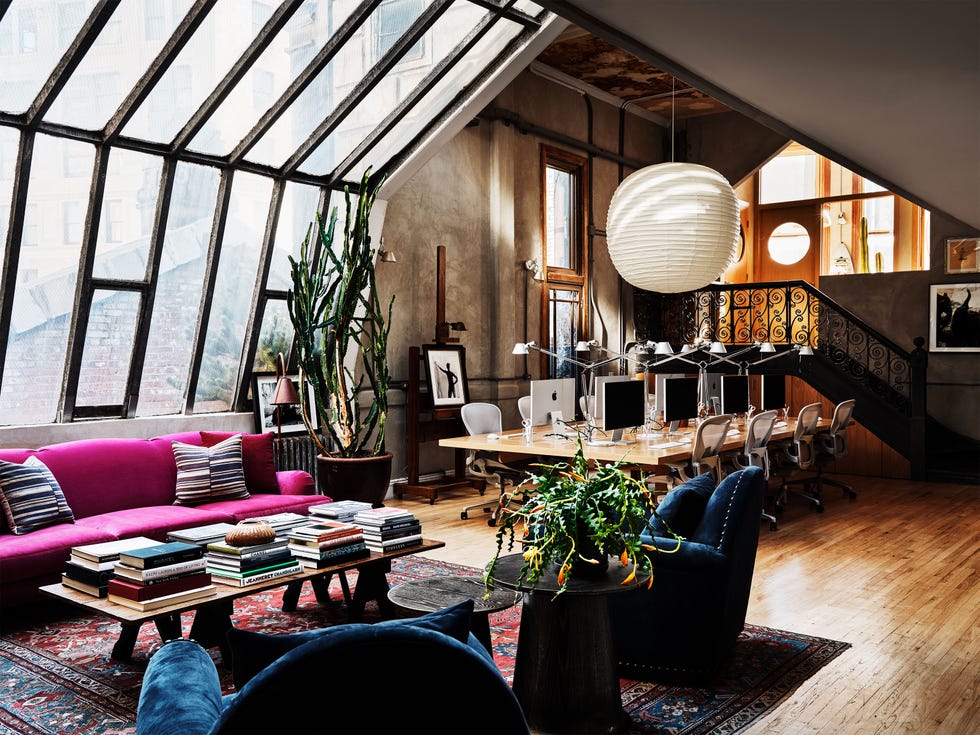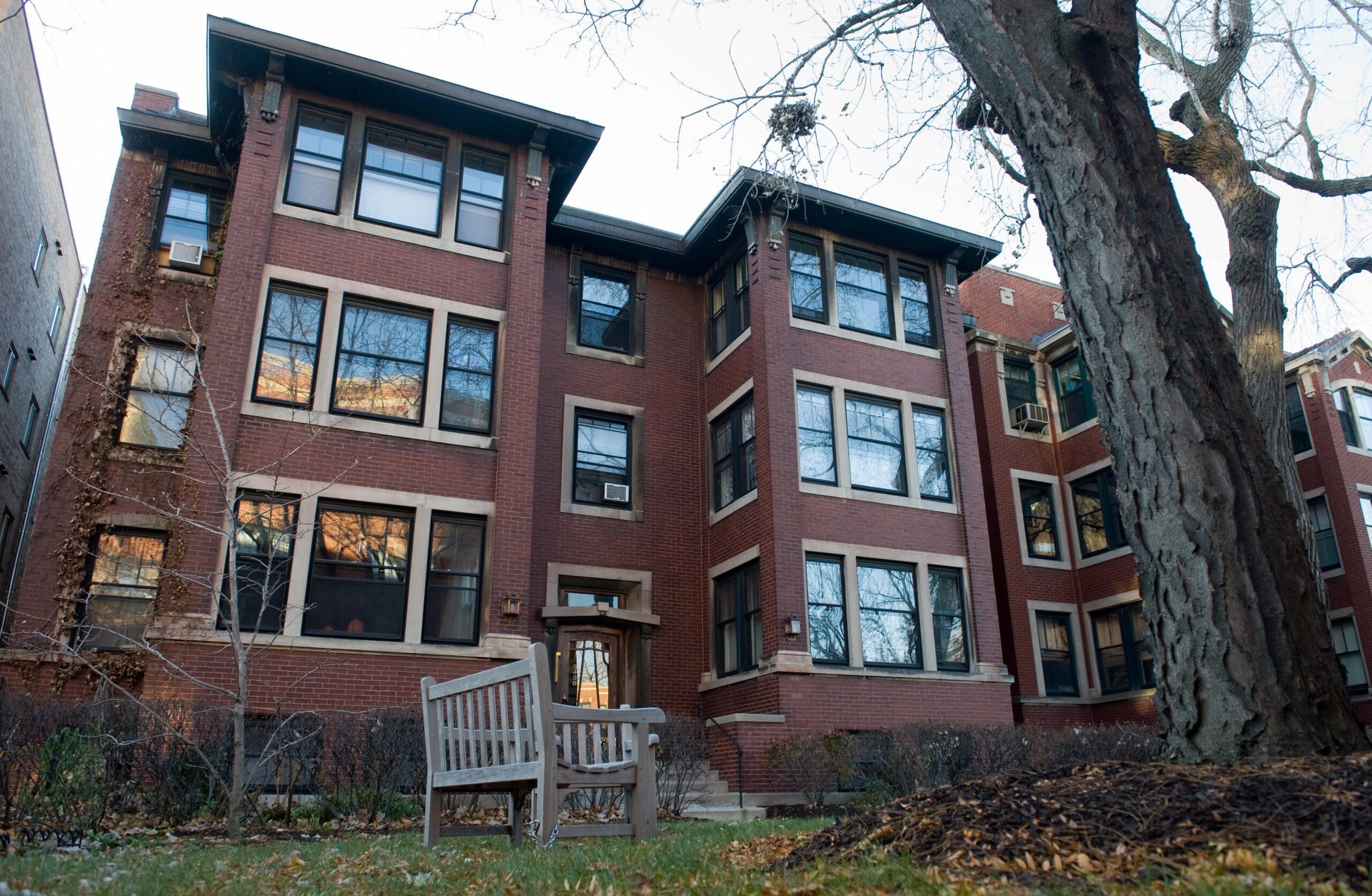“Was your interior designer Ayn Bland?” Barely ten minutes into Mountainhead, the first feature film from Succession creator Jesse Armstrong, the viewer is confronted with one of the film’s central tenets: beige is bad.
Articulated by Jeff (Ramy Youssef), the movie does a lot to engage this train of thought. Its central characters—tech bro founders Randall (Steve Carrell), Hugo (Jason Schwartzman), and Venis (Cory Michael Smith)—are pitted against not just each other, but the world writ large as it begins to crumble around them, mostly thanks to their own machinations.
But when did our current beige malaise set in? Much of the recent divisiveness might be attributed to the Kardashians, whose homes are synonymous with muted putty tones: “less is more” taken to its only logical conclusion—least is best. The aesthetic has occasionally gone viral, with the TikTok account Sad Beige even garnering notoriety for documenting the lifelessness of children’s retail offerings in the voice of German documentary filmmaker Werner Herzog.
Social media is as much a progenitor of the trend as it is the platform to document it and repackage it for frictionless consumption. Beige is safe, easy, legible—if your entire house has been unpacked from Amazon boxes, why fight the natural inclination to just live in one? The Mountainhead home might be the lair of a fictional tech boss, but the aesthetics remain the same up and down the corporate ladder.
The color family has its own troubled history: “khaki,” which is derived from the Urdu term for “dusty,” originated in mid-19th-century colonial India, as the critic and author Andrea Codrington noted in an eerily prescient 2001 essay for Cabinet magazine that further elaborates on beige’s latent potential for evil. Mountainhead, then, sees the hue returning to its roots, becoming shorthand for what Armstrong sees as everything that’s wrong with the world: complacency, exhaustion, and boredom.
Armstrong’s camera treats the home, designed by local Utah firm Upwall Design, as a character in and of itself, with lingering shots of quietly humming servers, spiraling staircases and vacant driveways presenting solitude and menace as two sides of the same coin. Town & Country reported that production designer Stephen Carter liked the property for its The Shining-esque vibes. He wasn’t wrong. “There’s a solitary nature to that house, too,” star Steve Carrell told The Salt Lake Tribune. “You feel like you’re away from everything.”
Another word for that feeling—articulated by scenes of the men laying about the home glued to their phones as scenes of worldwide terror stream in—would be dissociation. Think home is where the heart is? Mountainhead makes a compelling case that it’s often just another a bad trip.

Sean Santiago is ELLE Decor’s Deputy Editor, covering news, trends and talents in interior design, hospitality and travel, culture, and luxury shopping. Since starting his career at an interior design firm in 2011, he has gone on to cover the industry for Vogue, Architectural Digest, Sight Unseen, PIN-UP and Domino. He is the author of The Lonny Home (Weldon Owens, 2018), has produced scripted social content for brands including West Elm and Streeteasy, and is sometimes recognized on the street for his Instagram Reels series, #DanceToDecor




